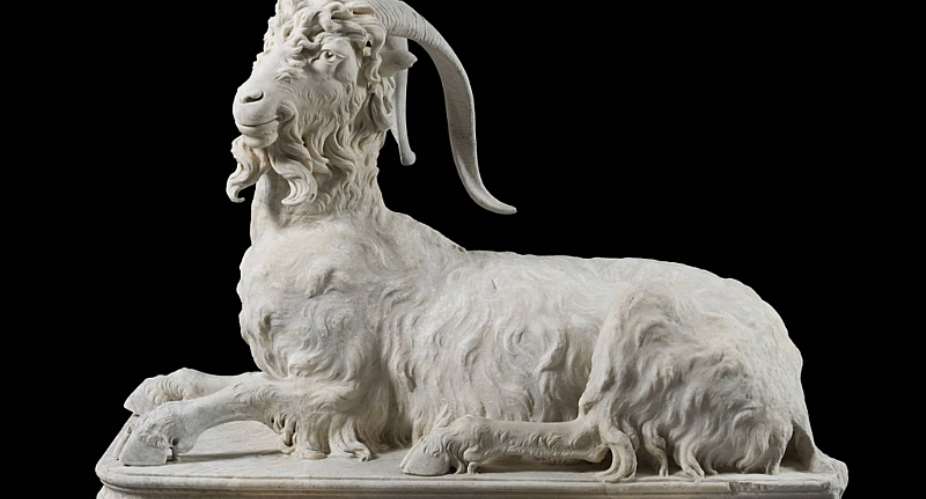More than 90 works of the Torlonia Collection, the largest privately owned collection of classical sculpture, have gone on display for the first time in Rome. The Greek and Roman masterpieces, restored to their ancient glory at the Torlonia Laboratory, have never previously been seen by the public at large.
The exhibition – The Torlonia Marbles, Collecting Masterpieces – is on until the end of June 2021 in the newly renovated spaces of the 16th century Palazzio Caffarelli, overlooking the Roman Forum, which is part of the eternal city's Capitoline Museums.
It is curated by Salvatore Settis and Carlo Gasparri, both archaeologists and academics of the Accademia dei Linceil.
The 620-piece Torlonia Collection, which has been hidden away for more than 70 years and preserved for more than two centuries, provides an important testimony of the history of collecting items of antiquity.
It comprises an exceptional artistic heritage and includes spectacular marble, bronze and alabaster statues, busts, reliefs and sarcophagi dating from the 5th century BC to the 4th century AD.
In the tradition of noble families, Prince Giovanni Torlonia and his son Alessandro, collected the antiquities in part from 19th century archaeological excavations in many of the families' various estates in and around Rome. These included Roma Vecchia on Via Latina, the Villa di Massenzio and the Vlla dei Quintili, as well as Porto, Sabina and Tuscia.
The collection grew with three important acquisitions: a collection belonging to Bartolomeo Cavaceppi, the most important art restorer in Rome in the late 18th century, the works gathered by Vincenzo Giustiniani, a 16th century banker and art collector, and the 18th century Villa Albani, which also had an important collection belonging to the Albani noble family.
Alessandro Torlonia, who died three years ago, set up the Torlonia Foundation in 2013 with the aim of preserving and promoting the Torlonia Collection and Villa Albani Torlonia: “cultural heritage of the Family for humanity” to be handed to future generations.
In March 2016, the Italian Ministry of Culture came to an agreement with the Torlonia Foundation to put the works on display.
Italian luxury brand Bulgari, passionate about arts and culture, worked with Torlonia Foundation to fund the restoration of the selected sculptures. The maison, known for its fine jewellery and watches, also restored the Spanish Steps in 2014.
The agreement also stipulates that the exhibition will tour abroad after it closes in Rome. Discussions are in progress with major international museums in Europe and the United States but have been slowed down by the Covid-19 pandemic.
The Rome exhibit was originally due to launch in April, but the opening had to be postponed, more than once, due to coronavirus.
Culture Minister Dario Franceschini said that it was unfortunate that COVID-19 restrictions would limit the number of people who can visit as well as the show's near-term lending prospects. He added that the works “take your breath away.”





 Tuesday’s downpour destroys ceiling of Circuit Court '8' in Accra
Tuesday’s downpour destroys ceiling of Circuit Court '8' in Accra
 SOEs shouldn't compromise on ethical standards, accountability – Akufo-Addo
SOEs shouldn't compromise on ethical standards, accountability – Akufo-Addo
 Father of 2-year-old boy attacked by dog appeals for financial support
Father of 2-year-old boy attacked by dog appeals for financial support
 Jubilee House National Security Operative allegedly swindles businessman over sa...
Jubilee House National Security Operative allegedly swindles businessman over sa...
 Nobody can order dumsor timetable except Energy Minister – Osafo-Maafo
Nobody can order dumsor timetable except Energy Minister – Osafo-Maafo
 Mahama wishes National Chief Imam as he clock 105 years today
Mahama wishes National Chief Imam as he clock 105 years today
 J.B.Danquah Adu’s murder trial: Case adjourned to April 29
J.B.Danquah Adu’s murder trial: Case adjourned to April 29
 High Court issues arrest warrant for former MASLOC Boss
High Court issues arrest warrant for former MASLOC Boss
 Align academic curriculum with industry needs — Stanbic Bank Ghana CEO advocates
Align academic curriculum with industry needs — Stanbic Bank Ghana CEO advocates
 Election 2024: We'll declare the results and let Ghanaians know we've won - Manh...
Election 2024: We'll declare the results and let Ghanaians know we've won - Manh...
